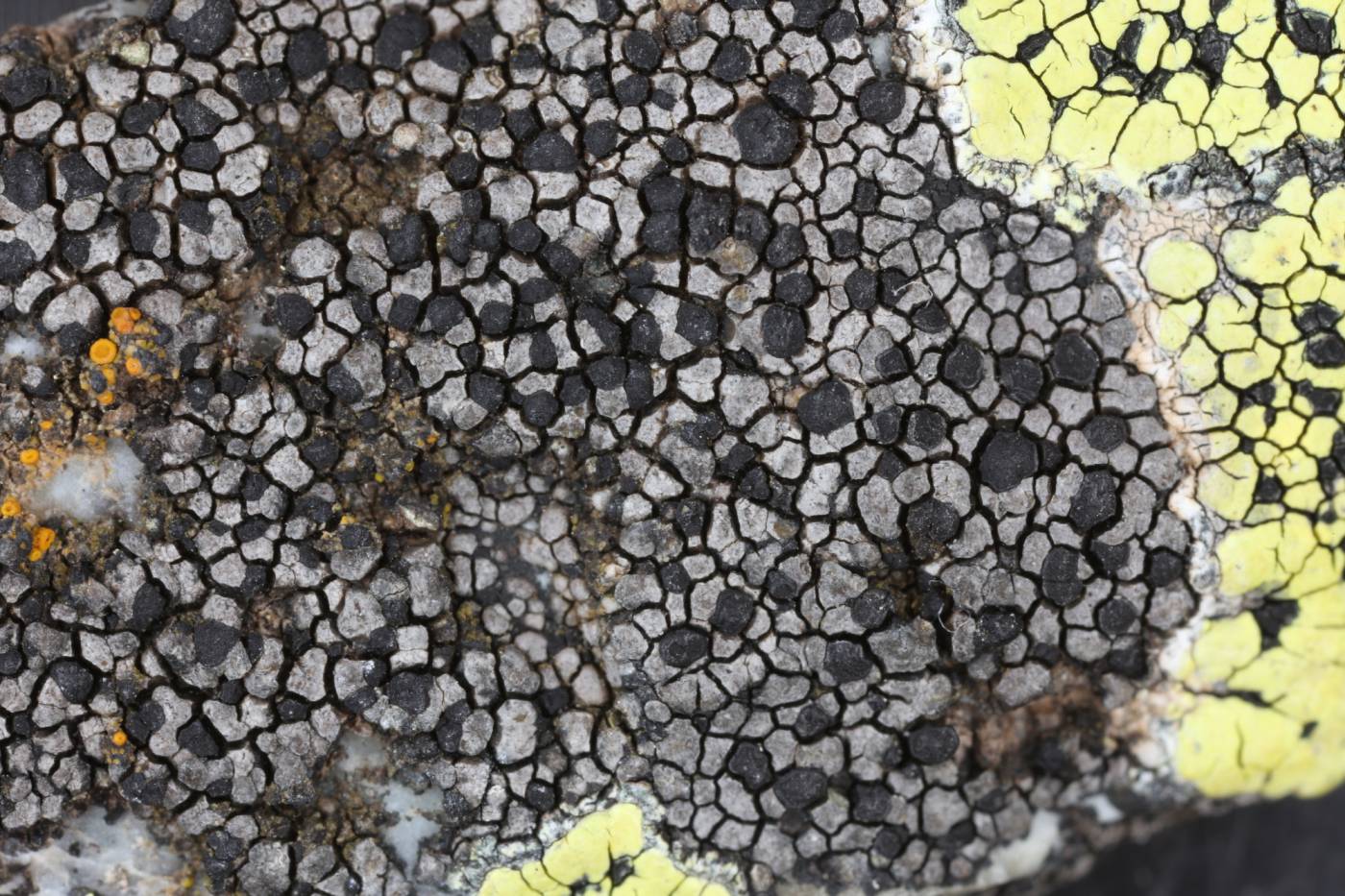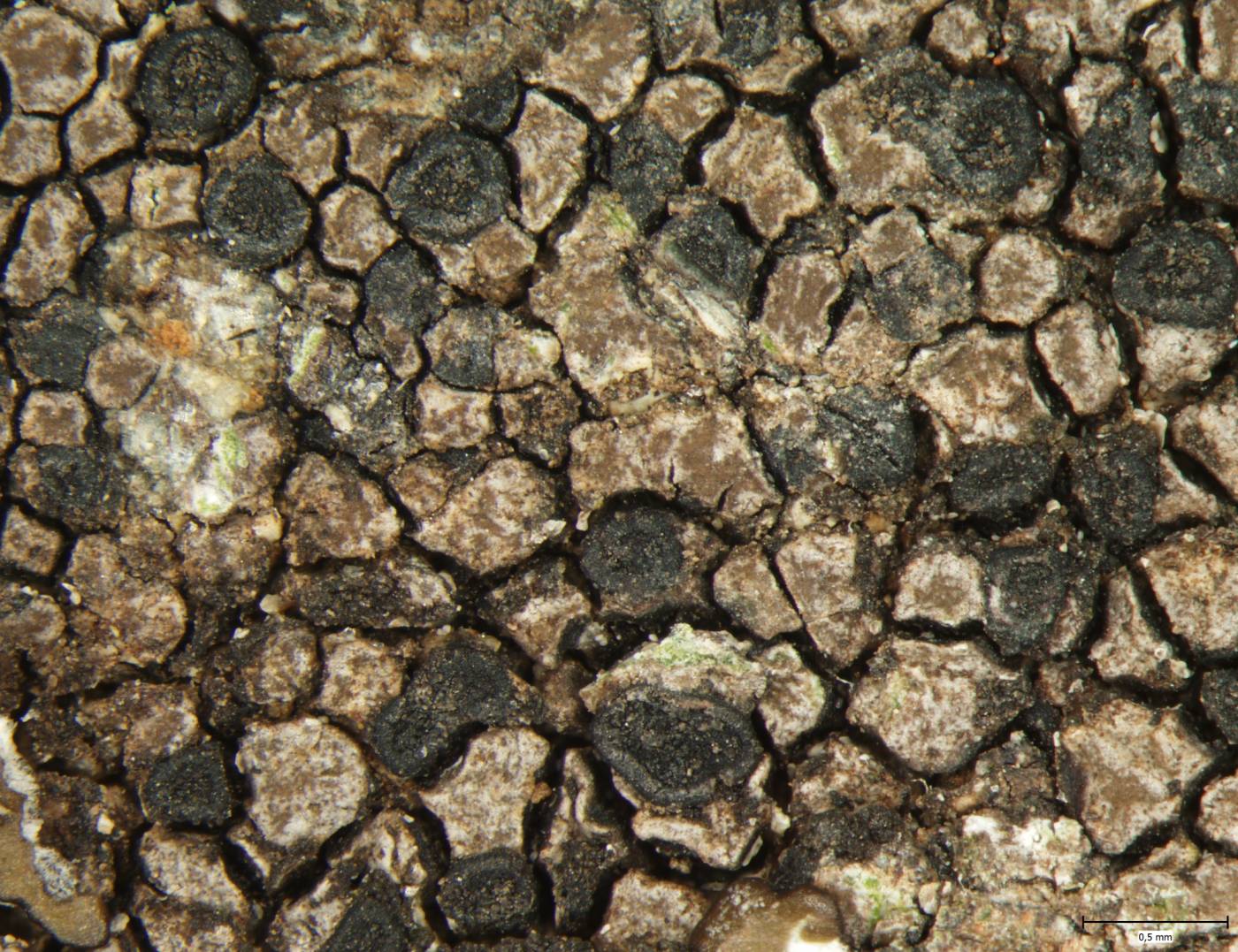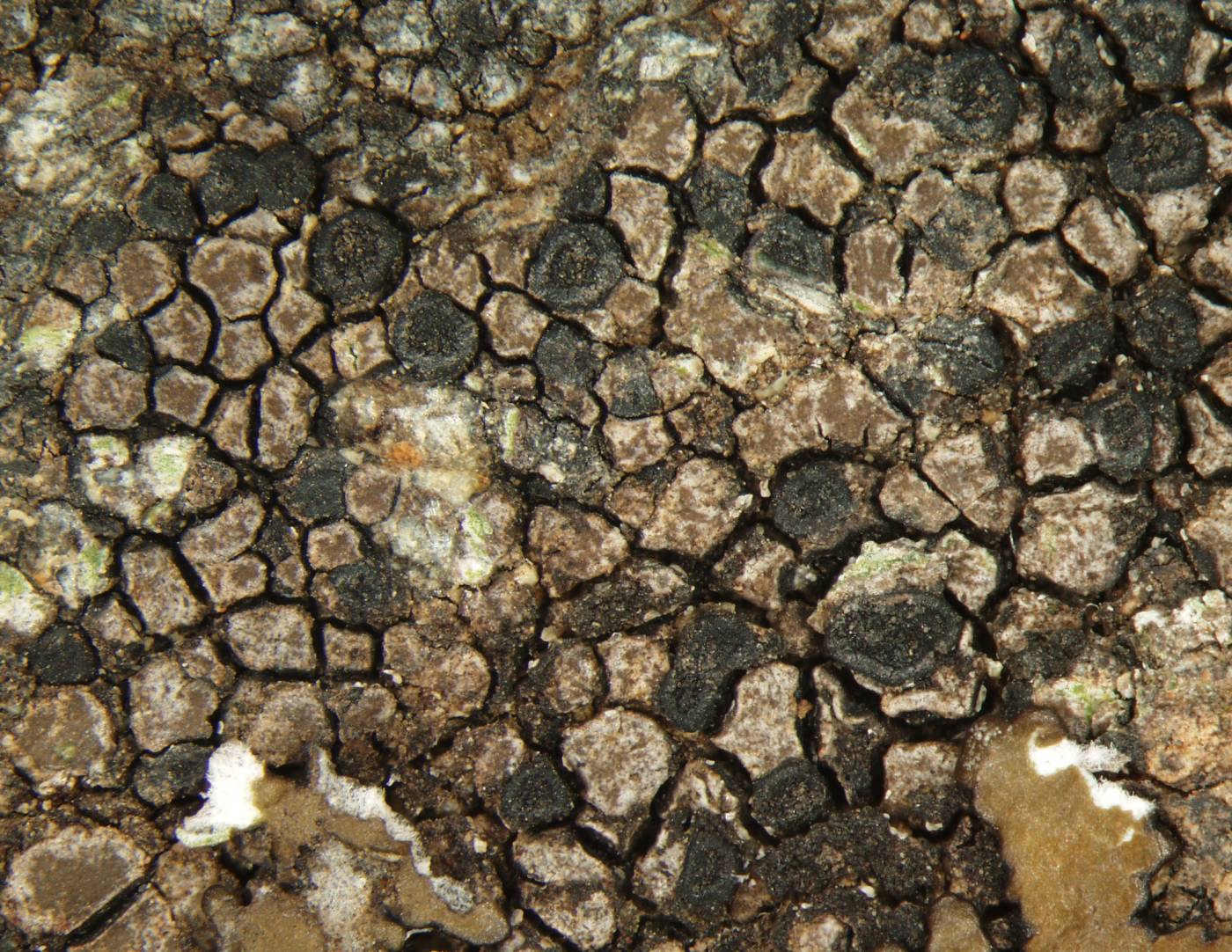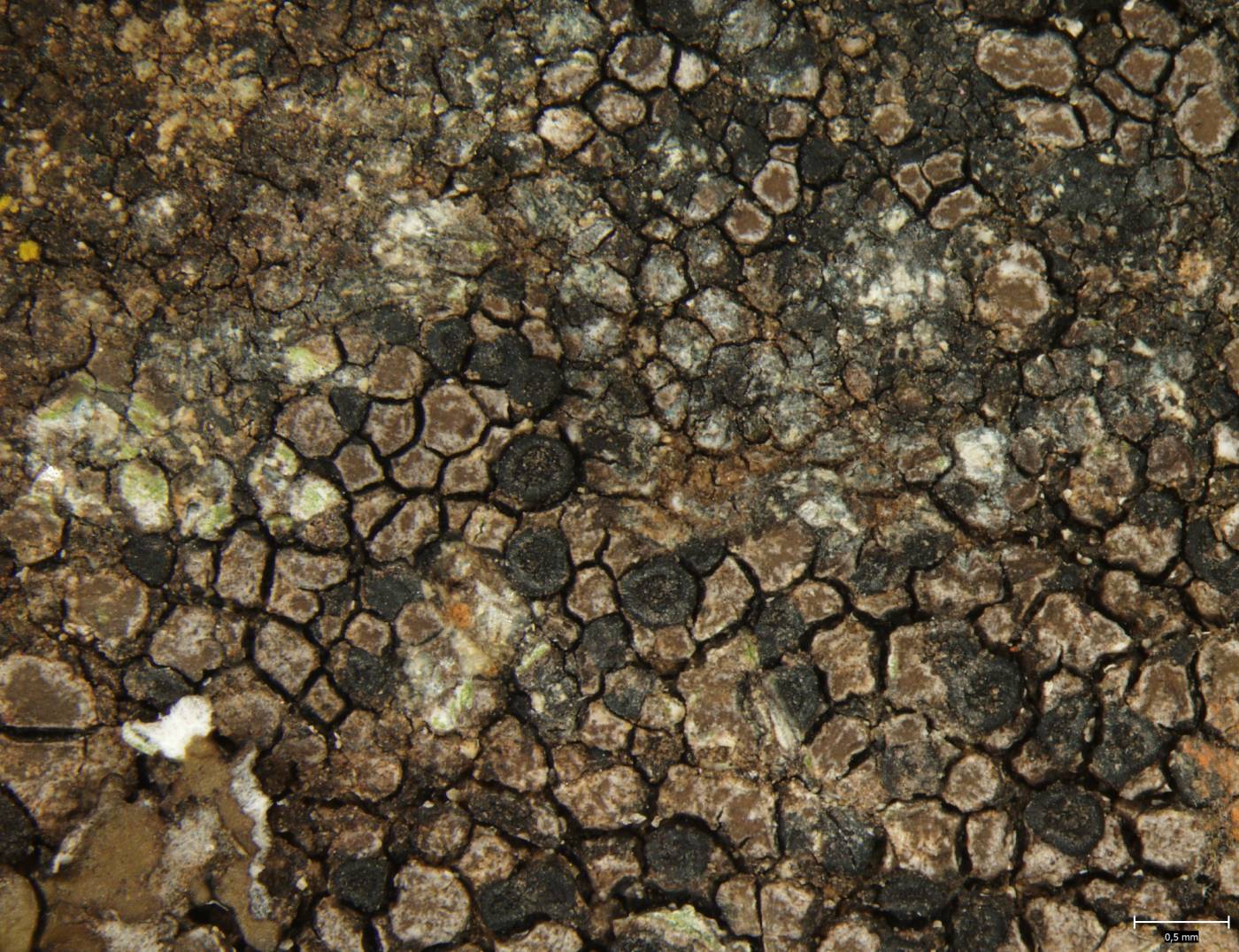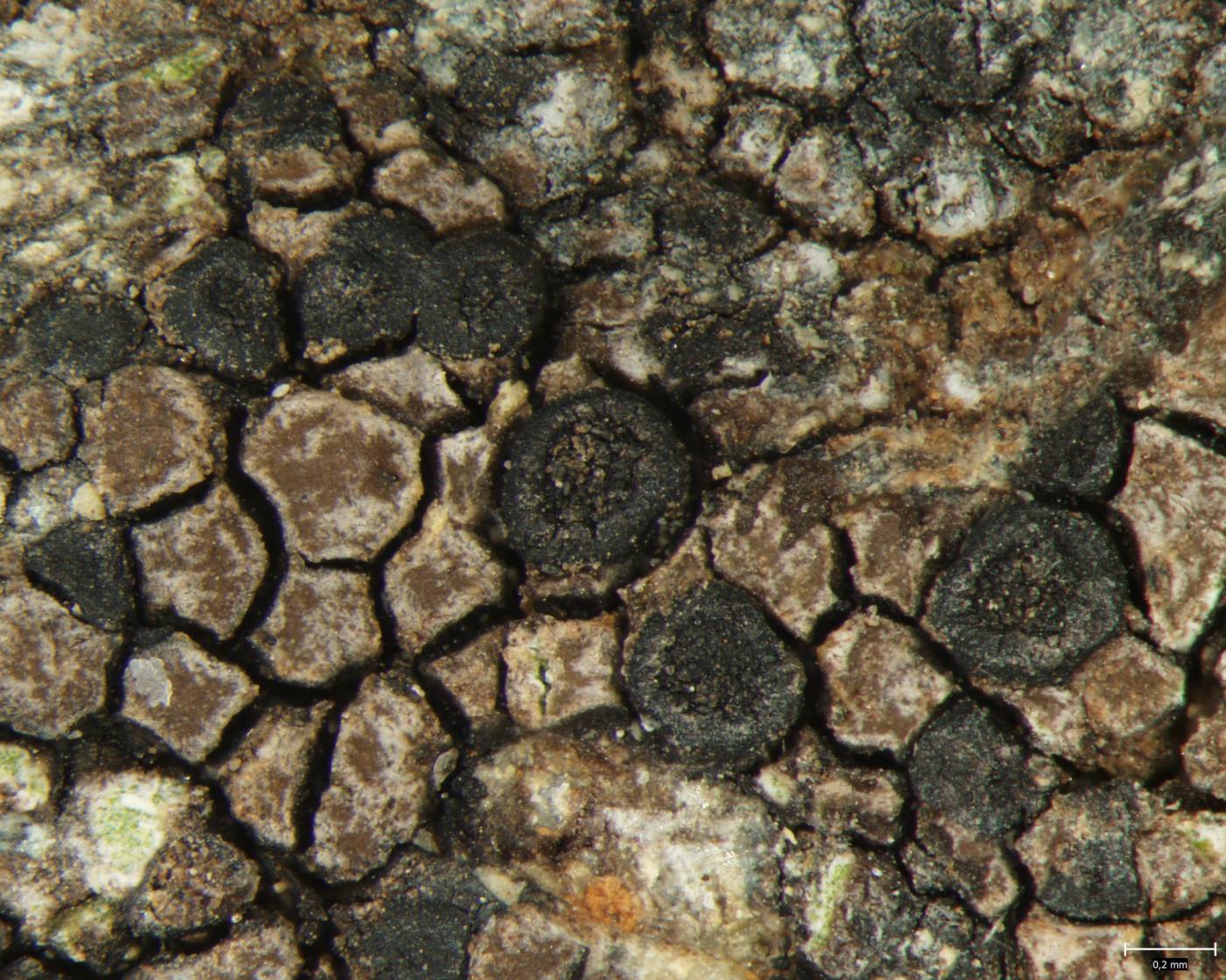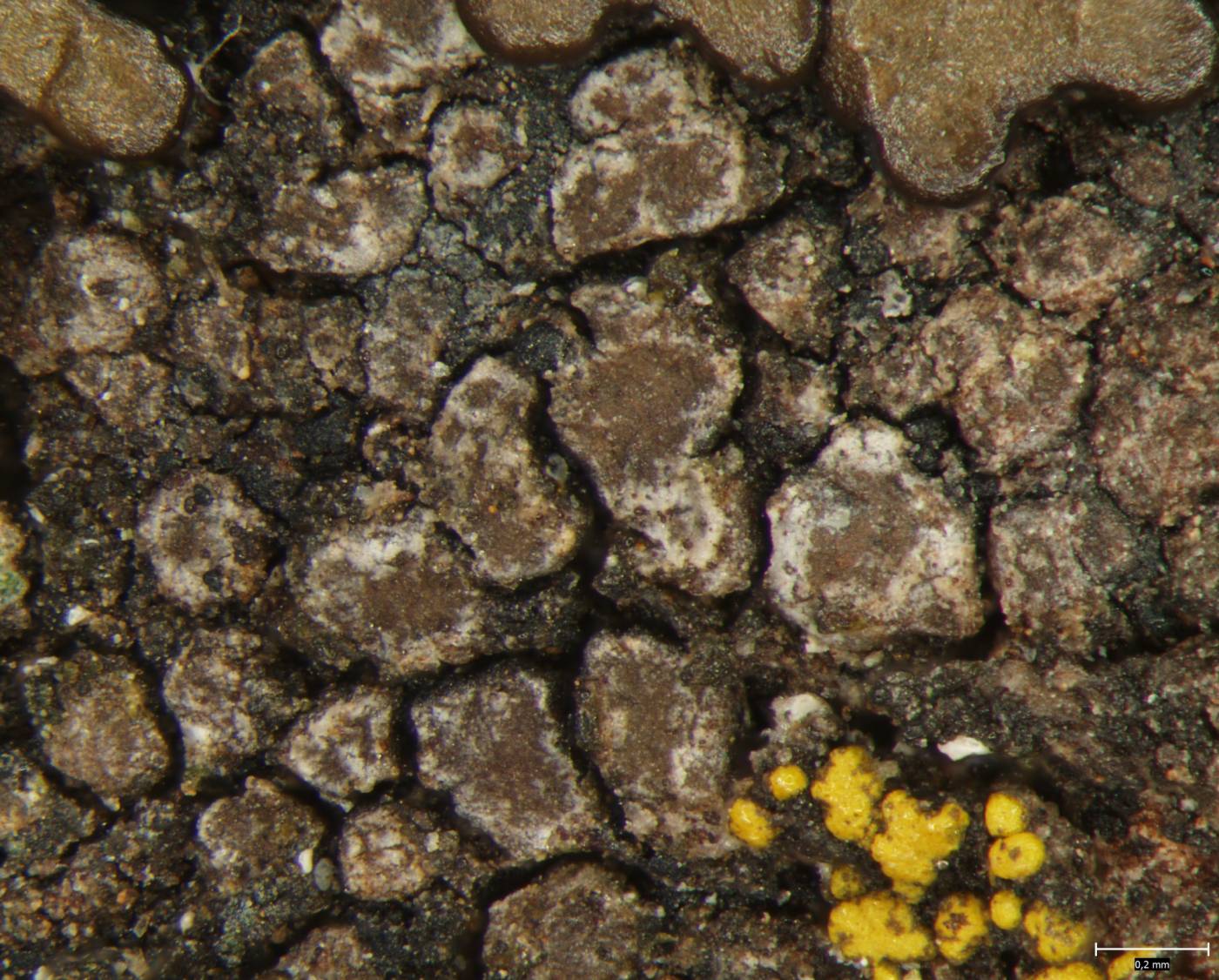Rhizocarpon geminatum forms an ashy-grey verrucose thallus and flat to slightly convex black apothecia with a thin proper margin. Microscopically, it is well-distinguishable due to the asci with only two large dark muriform spores. Epithecium is K+ purple red in a microscopic slide.
There are two ecotypes, probably representing separate species (Vondrák et al. 2022). R. geminatum s. str. grows at humid sites in river valleys of lake shores (Fletcher et al. 2009). This is probably the taxon forming populations in Velká kotlina in the Hrubý Jeseník Mts. In contrast, V. geminatum f. citrinum grows on nutrient enriched, slightly calcareous or dust-impregnated siliceous rocks in warmer areas. It is also known as a pioneer synanthropic species (Wirth et al. 2013). In the Czech Republic, it has only been collected at a few localities in the Křivoklát and Middle Vltava regions and in the Doupovské hory hills.
Literature: Vondrák J. et al. (2022): From Cinderella to Princess: an exceptional hotspot of lichen diversity in a long-inhabited central-European landscape. – Preslia 94: 143–181. Fletcher A., Gilbert O. L., Clayden S. & Fryday A. M. (2009): Rhizocarpon Ramond ex DC. (1805). – In: Smith C. W., Aptroot A., Coppins B. J., Fletcher A., Gilbert O. L., James P. W. & Wolseley P. A., The Lichens of Great Britain and Ireland, p. 792–808, The British Lichen Society, London. Wirth V., Hauck M. & Schultz M. (2013): Die Flechten Deutschlands. – Ulmer, Stuttgart.
taxonomic classification:Ascomycota → Lecanoromycetes → Rhizocarpales → Rhizocarpaceae → Rhizocarpon
Red List (Liška & Palice 2010):VU – vulnerable
Red List (Malíček 2023):C2 – strongly endangered
Occurrence in the Czech Republic
All records: 14, confirmed 11. One click on a selected square displays particular record(s), including their source(s).
